Turkistan Roaches: The Ultimate Guide for Enthusiasts
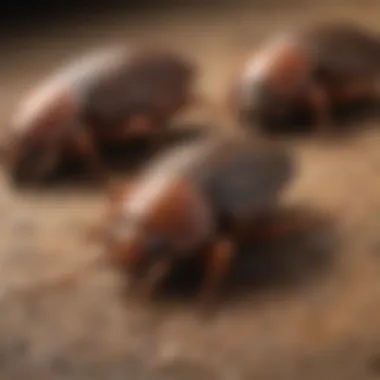
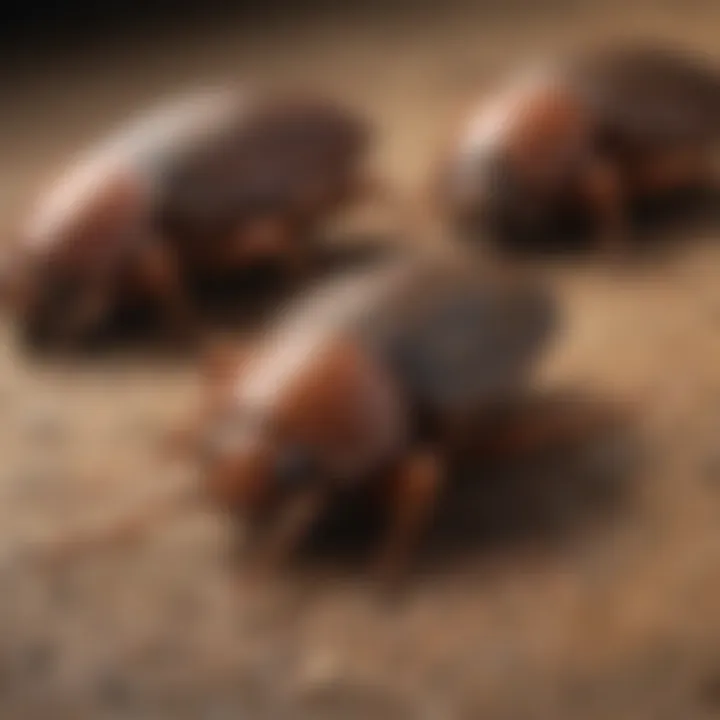
Intro
Turkistan roaches, gaining traction as a staple for many pet owners, present unique features suitable for various feeding needs. As understanding spreads about their benefits, more people are considering them not just as food for pets, but also for ecosystem support. This guide aims to delve into the essentials surrounding Turkistan roaches, addressing their biological characteristics, practical care information, and responsible sourcing practices.
Understanding the Pest
Identification
Turkistan roaches, scientifically known as Blatta lateralis, are recognizable by their distinct morphology. They exhibit a flat body, typically measuring around 1.5 inches in length. Their coloration ranges from brown to black, featuring elongated antennae that can reach twice their body length. Unlike some other roach species, Turkistan roaches possess wings; however, they are not strong fliers.
Life Cycle
Understanding the life cycle of the Turkistan roach is crucial for managing their population effectively. The cycle consists of three primary stages: egg, nymph, and adult.
- Egg Stage: Female Turkistan roaches produce egg cases known as oothecae, containing approximately 30 to 40 eggs. These cases are often dropped in safe hiding spots.
- Nymph Stage: After about four to six weeks, nymphs emerge, resembling smaller adults but lacking wings. They undergo molting several times before reaching maturity.
- Adult Stage: Full maturity is reached roughly two to three months after hatching. Adults can live for about a year with proper care and environmental conditions.
This life cycle contributes to their effectiveness as feeder insects; they reproduce quickly under suitable conditions.
Pest Prevention Strategies
Environment Modification
Creating an optimal environment for Turkistan roaches can enhance their growth while minimizing management issues. They thrive in warm, humid conditions, preferring temperatures around 80 to 90 degrees Fahrenheit and humidity levels above 50%. Maintaining these conditions can encourage healthy populations. Keeping their habitat clean also prevents unwanted infestations.
Physical Barriers
To manage Turkistan roaches effectively, implementing physical barriers can be beneficial. Using screens and tightly sealed containers helps in reducing chances of escape. It is essential to monitor their enclosures regularly, ensuring that any breaches are identified and remedied swiftly.
Control Methods
Chemical Control
While chemical approaches are less common in managing Turkistan roaches, sometimes they may be necessary. Care should be taken to choose products that are safe for use around pets and children. Always follow the manufacturer's instructions closely, as misuse can lead to ineffectiveness and potential harm.
Biological Control
Biological control methods are gaining favor when managing Turkistan roaches. Introducing natural predators like certain species of beetles can help mitigate roach populations without relying solely on chemicals. This method aligns well with sustainable practices, promoting ecological balance.
Employing Turkistan roaches in feeding practices supports not only pet health but also contributes positively to local ecosystems.
Preface to Turkistan Roaches
Turkistan roaches are increasingly recognized as a valuable resource within pet care and ecological balance. Understanding these insects is crucial for anyone considering their use. Their significance is evident in various applications, ranging from pet feeding to pest management. In this section, we will explore the essential elements, benefits, and considerations pertaining to Turkistan roaches, establishing a foundation for the rest of the discussion.
Origin and Habitat
Turkistan roaches, known scientifically as Blatta lateralis, are indigenous to regions in North Africa and the Middle East. Their natural habitat consists of arid and semi-arid environments, where they find refuge under rocks and within crevices. These conditions allow the roaches to thrive, as they can adapt to fluctuating temperatures and humidity levels. Understanding their origin gives insight into their behavior and needs.
Their habitat is characterized by warm climates and minimal moisture. This specificity explains why Turkistan roaches might struggle in colder or more humid environments. Those interested in raising these insects should attempt to replicate their natural habitat in a controlled setting, ensuring they thrive and reproduce effectively.
Physical Characteristics
The visual features of Turkistan roaches make them distinct among various roach species. They are medium-sized, usually ranging from one to two inches in length. Their coloration is typically a hazy brown, with a slightly glossy finish that can appear almost golden under certain lighting. This appearance not only serves aesthetic purposes but also helps them blend into their surroundings, enhancing their survival instincts.
One notable aspect of their physical form is their long, slender bodies, accompanied by long antennae that can measure as long as their body. These features are vital for navigation and sensory perception in their environment. Their wings, although not used for sustained flight, allow for short bursts of movement, which can be effective for escaping predators.
"The Turkistan roach’s unique adaptations reflect its evolutionary journey in harsh environments, making it a resilient species."
In addition, their strong exoskeleton is resilient, offering protection against external threats. When considering Turkistan roaches for feeding purposes, these characteristics contribute to the overall benefits they provide, making them a desirable option for pet owners and enthusiasts alike.
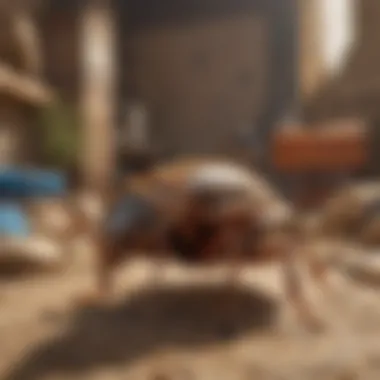
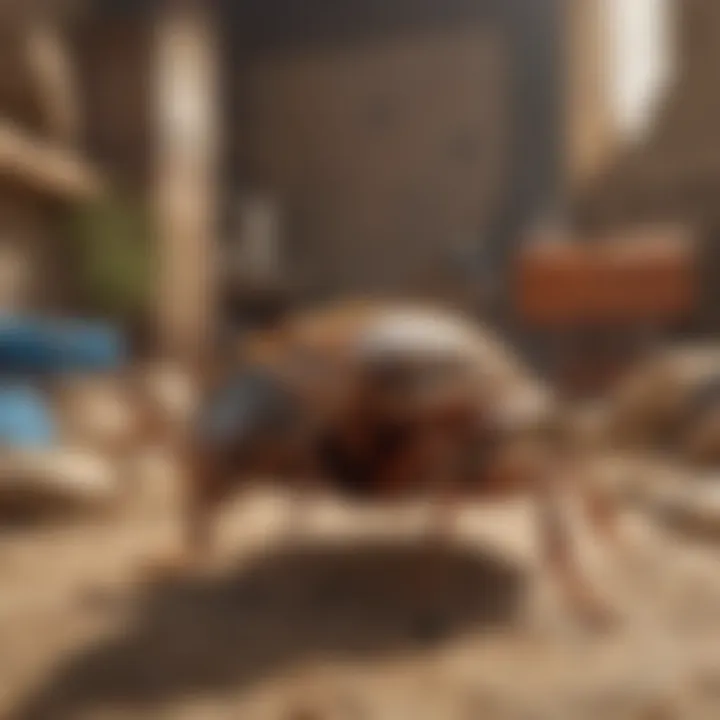
Ecological Role of Turkistan Roaches
The ecological role of Turkistan roaches is significant within their environment and contributes to the health of various ecosystems. These insects serve as an integral part of the food web, influencing both predator and prey dynamics. Their presence and proliferation benefit various organisms, including birds, reptiles, and mammals, which rely on them for nutrition. This section discusses how Turkistan roaches contribute to ecosystem health and their nutritional value as feeder insects.
Contribution to Ecosystem Health
Turkistan roaches are essential for maintaining the balance within their habitat. As detritivores, they feed on organic matter, such as decaying plant material and waste. This feeding behavior promotes the decomposition process, which is crucial for soil health and nutrient cycling. By breaking down organic materials, they help enrich the soil, making it suitable for plant growth.
Furthermore, their role as prey for various species supports biodiversity. Birds, amphibians, and even some mammals rely on Turkistan roaches as a food source, thereby sustaining the population of these predators. If Turkistan roaches were removed from their environment, the effects would ripple through the food chain, potentially leading to declines in predator populations.
"The presence of Turkistan roaches contributes significantly to the ecological balance, acting as both decomposers and a food source for various species."
Additionally, Turkistan roaches can aid in pest control efforts. By attracting natural predators to areas where pest insects thrive, they can indirectly help manage pest populations, reducing reliance on chemical pesticides. This aligns with integrated pest management practices, emphasizing environmentally responsible approaches to pest control.
Nutritional Value as Feeder Insects
From a nutritional perspective, Turkistan roaches offer substantial benefits as feeder insects. They are high in protein and low in fat, making them an ideal dietary supplement for reptiles and other pets. Their body composition typically includes about 20% protein, which is advantageous for the growth and health of carnivorous and omnivorous pets.
Moreover, Turkistan roaches contain essential vitamins and minerals. They are rich in calcium, which is particularly important for species that require it for bone health and metabolic processes. Feeding pets Turkistan roaches can help prevent deficiencies, leading to healthier and more vibrant animals.
The feeder insect industry continues to evolve, with Turkistan roaches becoming more prominent in pet diets. The growing awareness among pet owners of the importance of balanced nutrition is leading to increased demand for these insects. For potential buyers, understanding the nutritional profiles of Turkistan roaches can guide choices, ensuring that pets receive optimal nutrition.
In summary, the ecological role of Turkistan roaches is multifaceted. Their contributions to ecosystem health and their nutritional value as feeder insects make them a valuable consideration for both natural environments and pet care practices.
Benefits of Turkistan Roaches for Pets
Turkistan roaches are becoming recognized as more than just a meal for reptiles and other pets. The benefits of these roaches extend well beyond their role as a nutritional source. Understanding these advantages is crucial for pet owners looking to enrich the lives of their animals. Here, we explore the importance of Turkistan roaches in the context of pet care, focusing on their nutritional benefits and their role in stimulating natural behaviors.
Ideal Nutritional Source
Turkistan roaches are an excellent nutritional source for various pets, particularly reptiles, birds, and small mammals. They are high in protein, essential fatty acids, and contain a favorable balance of vitamins and minerals. Their nutritional profile can help maintain a balanced diet, crucial for the health and growth of pets.
The high protein content of Turkistan roaches makes them particularly suitable for growing animals or those in need of additional energy. Their fatty acid content is beneficial for skin and feather health in birds, while reptiles require a specific balance of nutrients for their overall well-being.
Moreover, the feeding mechanism of Turkistan roaches allows them to be a more engaging alternative to other feeder insects. When housed in a larger space, they display active behaviors like climbing and burrowing. This activity can provide live dietary variation and even attract the attention of pets, making mealtime more interesting.
Behavioral Stimulation
In addition to their nutritional benefits, Turkistan roaches contribute significantly to behavioral stimulation. Many pets, especially reptiles, thrive on dynamic feeding scenarios that simulate their instinctual hunting practices. Live prey encourages pets to exercise their natural hunting instincts, promoting physical activity and cognitive engagement.
Turkistan roaches move actively, unlike freeze-dried or inactive food sources. This movement can ignite predatory instincts in pets, encouraging them to stalk, chase, and capture their meals. Such interactions contribute to better overall mental health and reduce the likelihood of boredom, which can lead to stress or behavioral issues.
Providing Turkistan roaches as part of a pet’s diet can also help promote natural behaviors that might not be expressed with more static food options. For example, reptiles may exhibit increased basking behaviors after a feeding session, and birds may engage in more exploratory activities following a stimulating meal.
"Integrating Turkistan roaches into your pet's diet not only provides essential nutrients but also promotes a more active and engaging lifestyle for your beloved animals."
Choosing Turkistan roaches is not just a matter of nutrition. It also demonstrates an understanding of the behavioral needs of pets, ensuring they lead a healthy and stimulating life. This recognition of both nutritional and behavioral benefits makes Turkistan roaches a superior choice for conscientious pet owners.
Purchasing Turkistan Roaches
Purchasing Turkistan roaches is a significant aspect of their integration into both pet feeding and pest control practices. Understanding where to find these insects and how their pricing works can guide prospective buyers in making informed decisions. As more people recognize their ecological benefits and nutritional value, purchasing these roaches gains prominence.
Knowing the right sourcing options, along with the financial commitment involved, is crucial. Without a proper grasp of this topic, one may encounter unsatisfactory supplies or unethical practices. Hence, this section serves to clarify and provide detailed information that supports responsible purchasing.
Where to Buy
When considering where to buy Turkistan roaches, buyers have several options. Online retailers and specialized insect suppliers are common sources. Websites like Reptile City and Mulberry Farms cater specifically to those requiring feeder insects, offering a selection of sizes and quantities. Local pet stores may also have Turkistan roaches, though availability can vary.
Additionally, community forums such as reddit.com and local exotic pet groups can be helpful. They often have recommendations on trusted sellers and even local breeders. Networking in these communities can also open pathways to better pricing and unique offerings.
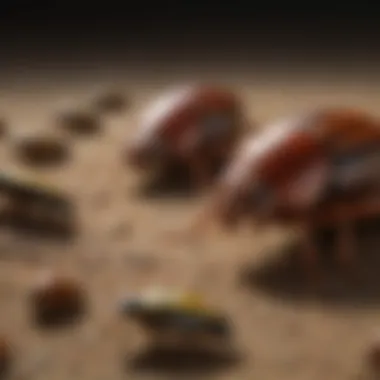
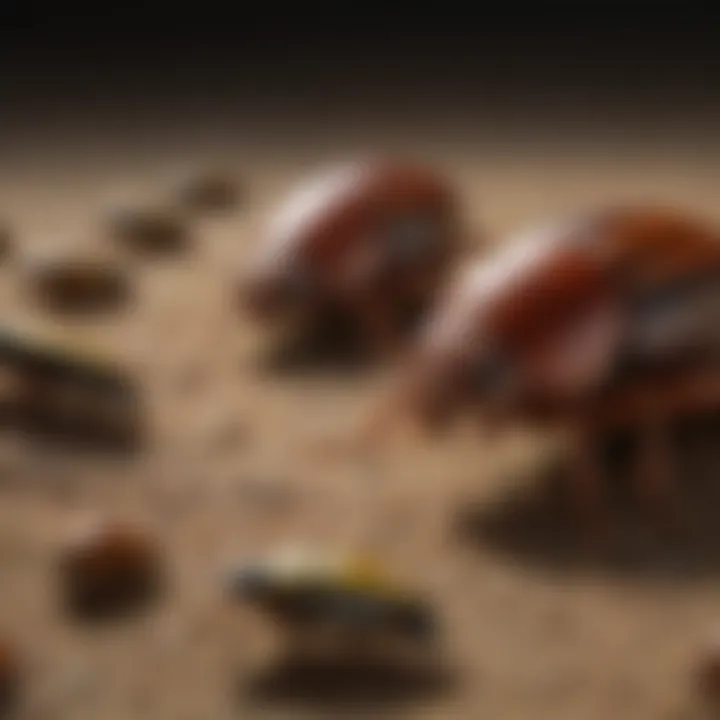
"Purchasing from reputable sources ensures quality and ethical breeding practices."
Pricing and Availability
The pricing of Turkistan roaches can fluctuate based on multiple factors. Size, quantity, and supplier location influence the final cost. Generally, prices range from $20 to $50 for a colony, which can consist of hundreds to thousands of roaches depending on the order.
Availability is another factor; during peak seasons, such as spring and summer, demand tends to rise. This spike may lead to higher prices or limited stock from certain suppliers. Conversely, off-peak times may yield discounts or special offers. Always consider checking multiple sources for the best deals before finalizing a purchase.
For buyers new to Turkistan roaches, tracking local prices and establishing a reliable source is essential for ongoing needs. Careful consideration of purchasing practices will ensure a stable supply of these insects for your specific use.
Care and Maintenance
Proper care and maintenance are fundamental for ensuring the health and well-being of Turkistan roaches. This segment focuses on their habitat requirements, feeding routines, and health management, which are essential for both casual keepers and those using these insects as feeders or for pest control. By understanding these key elements, owners can create an optimal environment that promotes the longevity and productivity of their roaches.
Habitat Requirements
Creating a suitable habitat is critical for Turkistan roaches. They require a warm environment, as they thrive in temperatures between 80°F to 90°F (27°C to 32°C). Maintaining this temperature is vital for their growth and reproduction. A simple heating mat or lamp can help achieve the necessary warmth. The humidity levels should ideally be between 40% to 70%. It's essential to monitor these conditions regularly, as extreme temperatures or humidity can impact their health.
Housing options include:
- Enclosures: Use plastic or glass terrariums with good ventilation.
- Substrate: A layer of coconut fiber or peat moss provides a comfortable living environment. Ensure this substrate is not too thick to allow for easy movement.
- Hiding spots: Incorporate cardboard or egg crates for the roaches to hide, mimicking their natural habitat.
Overall, the right habitat not only keeps the roaches healthy but also reduces stress, which can lead to a more active and productive colony.
Feeding Routines
Feeding Turkistan roaches is a relatively straightforward process, but consistency is key for their growth and overall well-being. A balanced diet that encompasses both protein and carbohydrates is essential for keeping them healthy.
Common food sources include:
- Fruits and vegetables: Fresh produce like carrots, apples, and leafy greens can be offered. Make sure to remove any uneaten food to prevent mold.
- Commercial insect food: High-quality commercial diets are available and can be a good supplement.
- Grains: Rolled oats or dry dog food can also provide essential nutrients.
It is advisable to feed them several times a week, ensuring that they have varied options to optimize their nutritional intake. A regular feeding schedule helps maintain a strong colony capable of supporting pets or pest control efforts.
Health Management
Health management is a critical aspect of keeping Turkistan roaches, especially in larger colonies. Several potential health issues can arise if not properly managed, so regular monitoring is necessary.
Signs of an unhealthy colony may include:
- Lack of movement or energy
- Discoloration of the exoskeleton
- High mortality rates
Preventative measures include:
- Regular cleaning: Maintain cleanliness in the habitat to minimize the risk of diseases.
- Temperature and humidity checks: Keep environments stable as fluctuations can stress the roaches.
- Infestation control: Be vigilant against common pests that can damage the roach population, such as mold or mites.
Regular health checks can prevent minor issues from escalating into significant problems.
In summary, consistent care and maintenance of Turkistan roaches lead to a more sustainable and effective use of these insects, whether for feeding pets or managing pests. By first understanding habitat needs, following a proper feeding routine, and adopting health management practices, owners can optimize their roach colonies.
Turkistan Roaches in Pest Control
Turkistan roaches are not just notable as feeder insects. Their potential role in pest control is significant as well. Understanding the benefits and elements surrounding their utilization can highlight their contribution to integrated pest management systems. This section explores how Turkistan roaches can aid in maintaining balance in ecosystems and discusses their specific advantages when employed in pest control strategies.
Utilization in Integrated Pest Management
Integrated pest management (IPM) is a holistic approach to controlling pest populations, combining various techniques. Turkistan roaches can be an integral part of this strategy for several reasons.
- Natural Predators: Turkistan roaches serve as a food source for natural predators like birds and reptiles. When these roaches are present in ecosystems, they support the food web, helping to regulate insect populations that can become pests.
- Reduce Chemical Use: By using Turkistan roaches in pest control, there is less reliance on chemical pesticides. This is beneficial for homeowners and the environment alike. Reducing chemicals helps minimize the negative environmental impacts associated with synthetic pest control agents.
- Biodegradable Waste: Turkistan roaches can consume organic waste, limiting the amount of decaying matter that can attract other pests. This characteristic makes them valuable in keeping areas clean and less hospitable for unwanted insects.
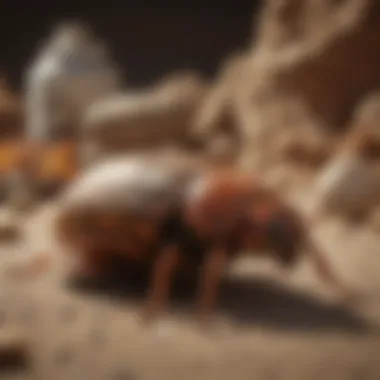
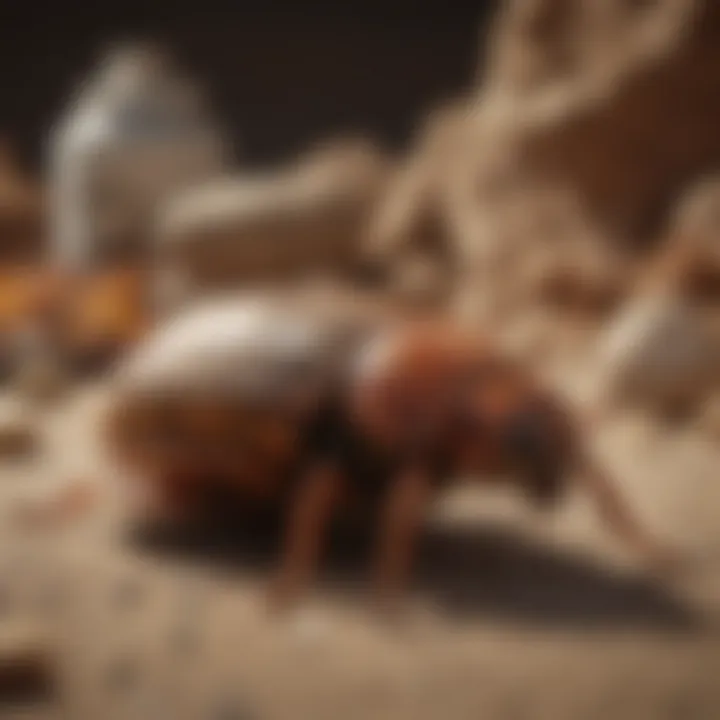
It is essential to consider that the introduction of Turkistan roaches should be a calculated decision. Their presence must be monitored to ensure they do not become pests themselves.
Comparative Analysis with Other Feeder Insects
In comparing Turkistan roaches to other feeder insects such as crickets and mealworms, several factors can be noted.
- Nutritional Value: Turkistan roaches are high in protein and low in fat, much like crickets. This makes them an excellent food resource for pets such as reptiles and birds. However, they often have a sturdier exoskeleton than other insects, which can offer pets a satisfying crunch.
- Breeding Ease: Turkistan roaches breed more robustly than many other feeder insects. They are resilient and can thrive in various conditions. This makes them easier to maintain for long-term feeding needs.
- Eco-friendliness: Compared to mealworms, Turkistan roaches are more environmentally friendly as they utilize lesser resources for breeding and maintenance. Their life cycle and feeding habits mean they can produce fewer emissions and require less food intake.
"Turkistan roaches are a sustainable option, providing both ecological benefits and efficient pest control strategies."
Legal and Ethical Considerations
When engaging with Turkistan roaches, either for pest control or as feeder insects, understanding the legal and ethical landscapes is crucial. These considerations shape how individuals approach the keeping and sale of these insects. Adhering to legal requirements fosters responsible ownership and contributes positively to ecological systems. It is essential to grasp the regulations pertaining to the sale and care of Turkistan roaches to ensure that all practices align with local laws and ethical norms.
Regulations for Sale and Care
The sale of Turkistan roaches is governed by various laws and regulations. These laws can vary significantly by region or country. Some key regulations include:
- Licensing and Permits: In some areas, individuals or businesses selling Turkistan roaches must have proper licenses. This ensures that sellers are operating legally and safely.
- Health Standards: As a seller, maintaining sanitary conditions is vital. Regulations often specify how to care for roaches to ensure they are healthy and free from disease. Poor conditions can lead to infestations and health risks.
- Species Restrictions: Certain areas may have restrictions on the types of insects that can be sold or kept. Familiarizing oneself with local laws is necessary to avoid fines or legal issues.
Understanding these regulations is not just about compliance; it also reflects a commitment to quality and responsibility in insect management. Individuals must research these factors based on their locality.
Ethics of Keeping Feeder Insects
Keeping feeder insects, such as Turkistan roaches, involves numerous ethical dilemmas which deserve careful consideration. When housing these creatures, the following ethical principles should be contemplated:
- Welfare and Treatment: Owners should provide appropriate living conditions that respect the natural behavior and well-being of roaches. This includes adequate space, temperature, and nutrition to promote a healthy habitat.
- Responsibility in Feeding Practices: If used as food for pets, it is vital to consider the source of the food for the roaches themselves. The nutritional balance in their diet impacts their health, and subsequently, the health of the pets that consume them.
- Impact on Local Ecosystems: Introducing non-native species into local ecosystems can alter natural balances. Therefore, scrupulous attention to sourcing and keeping Turkistan roaches should be observed to prevent ecological disturbances.
"Ethical treatment of all creatures, regardless of size or species, is paramount for maintaining a balanced ecosystem and responsible pet ownership."
Challenges in Keeping Turkistan Roaches
Maintaining Turkistan roaches as pets can present unique challenges. While they are often seen as a more manageable insect to care for, several factors need to be considered. Understanding these challenges is essential for anyone looking to breed or keep Turkistan roaches, whether for personal interest or as a food source for pets. Addressing these issues can prevent stress in roaches and ensure a thriving environment.
Common Issues and Solutions
Various problems can arise when keeping Turkistan roaches. Here are some common issues along with suggested solutions:
- Temperature Regulation: Turkistan roaches require a warm environment. When temperatures drop below 80°F (27°C), they may become sluggish. A heat lamp or mat can help maintain a stable temperature.
- Humidity Levels: These roaches thrive in a humid habitat, ideally around 40-60%. If humidity drops too low, they might have difficulty molting. Use a hygrometer to monitor levels and mist the enclosure if necessary.
- Dietary Needs: A poor diet can lead to health issues. Ensure they have access to fresh fruits, vegetables, and commercial insect food. This will promote healthy growth and reproduction.
- Overcrowding: If not managed, populations can grow quickly. This can lead to competition for resources and increase stress levels. It’s crucial to provide an adequately sized enclosure and manage the population through separation when necessary.
To summarize, by understanding the common obstacles and implementing effective solutions, caretakers can create a stable and healthy environment for Turkistan roaches.
Preventative Measures for Infestations
Preventative strategies can significantly reduce the risk of infestations in Turkistan roach habitats. Here are some effective measures:
- Regular Cleaning: Consistent cleaning of the habitat is vital. Remove waste and uneaten food to prevent mold and pests. A clean environment reduces the likelihood of infestations.
- Proper Enclosure Design: Ensure that the enclosure is secure. Gaps should be minimized to prevent escape and restrict the entry of unwanted pests.
- Quarantine New Roaches: Always quarantine any new roaches before introducing them. This helps ensure they are free from diseases and pests that could spread to the existing population.
- Monitor for Signs of Infestation: Regularly check for signs of pests, such as webs or unusual droppings. Early detection is key to preventing a more serious problem.
By incorporating these preventative measures, you can maintain a healthy environment and reduce the likelihood of infestations, ensuring a thriving population of Turkistan roaches.
Ending
The conclusion of this article emphasizes several significant elements concerning Turkistan roaches. As previously discussed, this species plays an essential role not only in the ecosystem but also in the realm of responsible pet care. Their nutritional profiles cater to various pets and their behaviors encourage engagement, which is vital for the well-being of many animals.
Moreover, the legal and ethical dimensions surrounding the sale and care of Turkistan roaches are crucial for both enthusiasts and sellers. Understanding these factors ensures proper management practices that benefit all parties involved.
In summary, Turkistan roaches represent a valuable resource for pet owners and businesses alike. They offer a sustainable feeder option that aligns with ecological practices. Being informed and educated about their care contributes to mutual respect for all living things.
Summary of Key Points
- Origin and Habitat: Turkistan roaches are native to certain regions, which influence their habitat preferences.
- Nutritional Value: They provide essential nutrients for a variety of pets, promoting healthy growth and development.
- Legal Considerations: Awareness of regulations ensures ethical treatment and sale of these insects.
- Challenges and Solutions: Identifying common issues face with Turkistan roaches and knowing how to solve them is essential for successful management.
Future Perspectives
Looking ahead, the future of Turkistan roaches seems promising. As interest in sustainable feeding practices grows, more research can focus on refining breeding techniques and enhancing nutritional benefits. Innovations in habitat design may further improve the quality of life for these insects and their consumers.
Additionally, educating pet owners about the ecological impacts of sourcing feeder insects will likely strengthen the positioning of Turkistan roaches in the pet industry. With a continuous increase in awareness, it may pave the way for more responsible practices in insects care and managing populations for future food sources.







